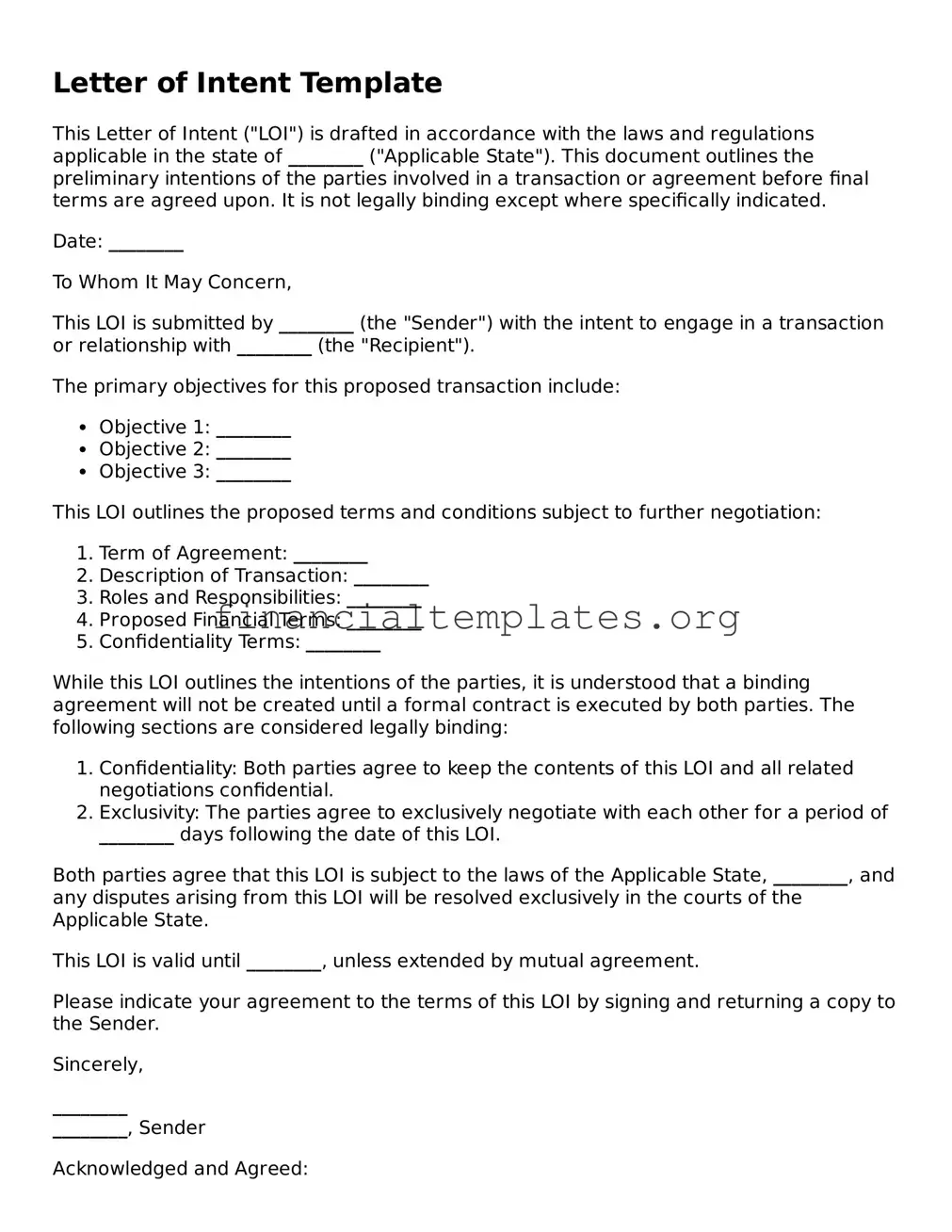Letter of Intent Template
This Letter of Intent ("LOI") is drafted in accordance with the laws and regulations applicable in the state of ________ ("Applicable State"). This document outlines the preliminary intentions of the parties involved in a transaction or agreement before final terms are agreed upon. It is not legally binding except where specifically indicated.
Date: ________
To Whom It May Concern,
This LOI is submitted by ________ (the "Sender") with the intent to engage in a transaction or relationship with ________ (the "Recipient").
The primary objectives for this proposed transaction include:
- Objective 1: ________
- Objective 2: ________
- Objective 3: ________
This LOI outlines the proposed terms and conditions subject to further negotiation:
- Term of Agreement: ________
- Description of Transaction: ________
- Roles and Responsibilities: ________
- Proposed Financial Terms: ________
- Confidentiality Terms: ________
While this LOI outlines the intentions of the parties, it is understood that a binding agreement will not be created until a formal contract is executed by both parties. The following sections are considered legally binding:
- Confidentiality: Both parties agree to keep the contents of this LOI and all related negotiations confidential.
- Exclusivity: The parties agree to exclusively negotiate with each other for a period of ________ days following the date of this LOI.
Both parties agree that this LOI is subject to the laws of the Applicable State, ________, and any disputes arising from this LOI will be resolved exclusively in the courts of the Applicable State.
This LOI is valid until ________, unless extended by mutual agreement.
Please indicate your agreement to the terms of this LOI by signing and returning a copy to the Sender.
Sincerely,
________
________, Sender
Acknowledged and Agreed:
________
________, Recipient
